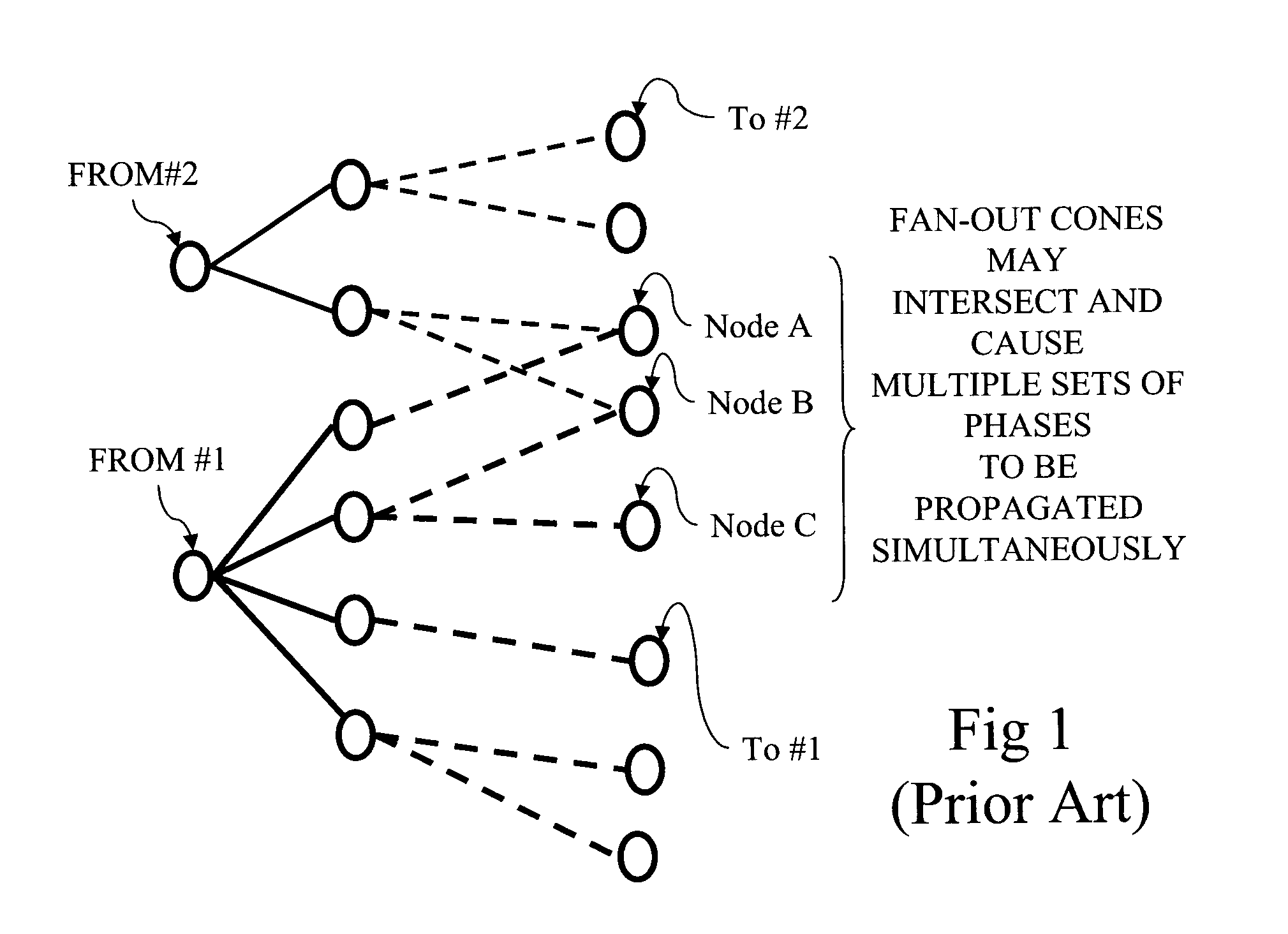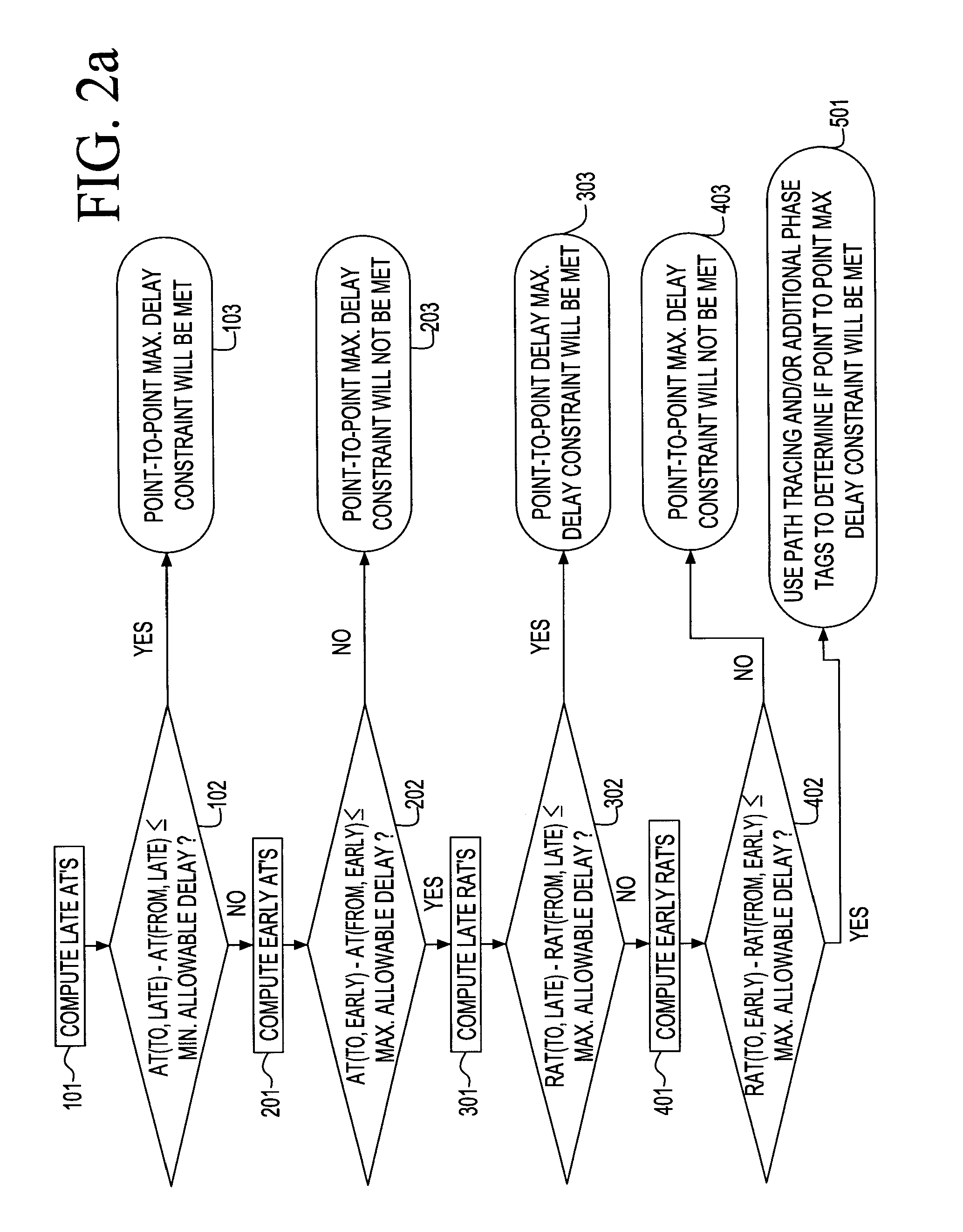System and method for efficient analysis of point-to-point delay constraints in static timing
a point-to-point delay and static timing technology, applied in the field of design automation, can solve the problems of high cost of incremental execution of path tracing methods, inability to easily use, and large memory and runtime overhead of applying such point-to-point assertions, so as to reduce the number of instances
- Summary
- Abstract
- Description
- Claims
- Application Information
AI Technical Summary
Benefits of technology
Problems solved by technology
Method used
Image
Examples
Embodiment Construction
[0032]The present invention and various features, aspects and advantageous details thereof are explained more fully with reference to the non-limiting embodiments that are illustrated in the accompanying drawings and detailed in the following description. It should be noted that the features illustrated in the drawings are not necessarily drawn to scale. Descriptions of well-known components and processing techniques are omitted so as to not unnecessarily obscure the present invention in detail.
[0033]FIGS. 2a and 2b are flowcharts illustrating the inventive method as applied to maximum and minimum point to point delay constraints, respectively. In order to further appreciate the present methodology and details thereof, initially several simple illustrative examples will be provided in conjunction with the various steps of the present invention as embodied by the two flowcharts.
[0034]Referring to FIG. 3, an illustrative circuit is shown comprising two primary input pins A and F, two ...
PUM
 Login to view more
Login to view more Abstract
Description
Claims
Application Information
 Login to view more
Login to view more - R&D Engineer
- R&D Manager
- IP Professional
- Industry Leading Data Capabilities
- Powerful AI technology
- Patent DNA Extraction
Browse by: Latest US Patents, China's latest patents, Technical Efficacy Thesaurus, Application Domain, Technology Topic.
© 2024 PatSnap. All rights reserved.Legal|Privacy policy|Modern Slavery Act Transparency Statement|Sitemap



